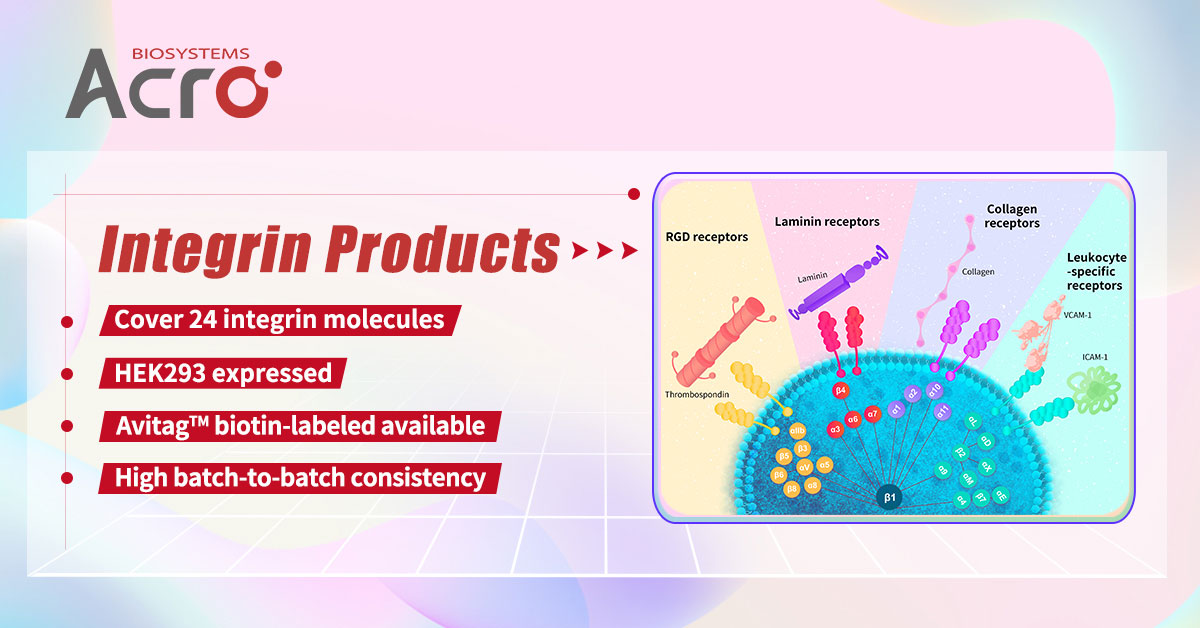
Leave message
Can’t find what you’re looking for?
Fill out this form to inquire about our custom protein services!
Inquire about our Custom Services >>

































 Limited Edition Golden Llama is here! Check out how you can get one.
Limited Edition Golden Llama is here! Check out how you can get one.  Limited Edition Golden Llama is here! Check out how you can get one.
Limited Edition Golden Llama is here! Check out how you can get one.
 Offering SPR-BLI Services - Proteins provided for free!
Offering SPR-BLI Services - Proteins provided for free!  Get your ComboX free sample to test now!
Get your ComboX free sample to test now!
 Time Limited Offer: Welcome Gift for New Customers !
Time Limited Offer: Welcome Gift for New Customers !  Shipping Price Reduction for EU Regions
Shipping Price Reduction for EU Regions
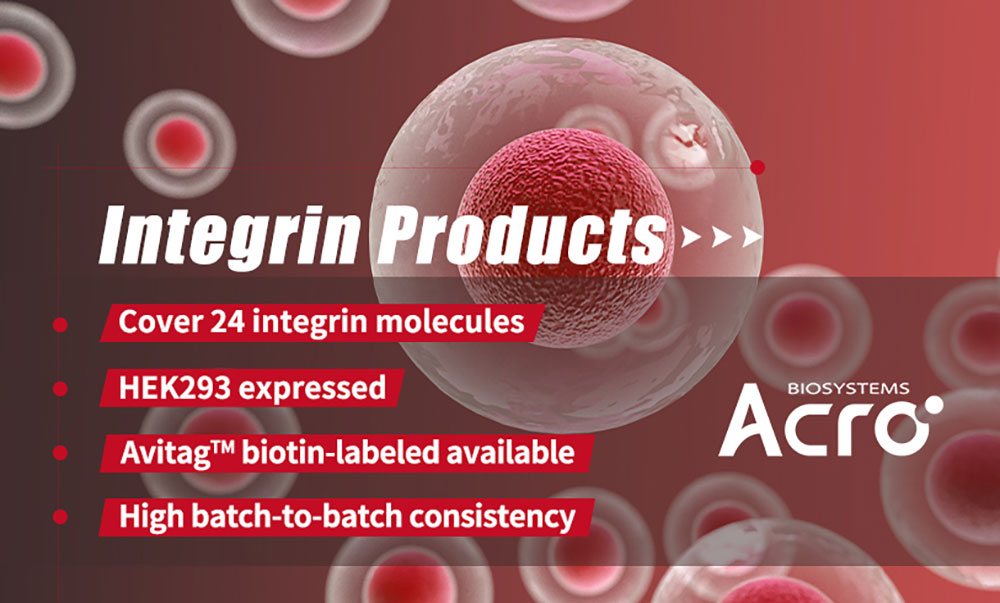
Integrin α-4/β-7, also known as Lymphocyte Peyer’s patch adhesion molecule-1 (LPAM-1), is an integrin heterodimer that is composed of covalently linked α-4 and β-7 subunits. LPAM-1is expressed on the surface of lymphocytes and acts as a homing receptor that mediates the adhesion of lymphocytes onto endothelial cells. Increased expression of LPAM-1 is found on memory CD4+ T cells near intestinal tissues. Furthermore, LPAM-1’s primary ligand is mucosal vascular addressin cell adhesion molecule 1 (MAdCAM-1), a receptor specifically expressed on intestinal lamina venules and gut secondary lymphoid organs. As such, LPAM-1 plays a significant role in chronic gastrointestinal disorders and has been identified as a critical therapeutic target.
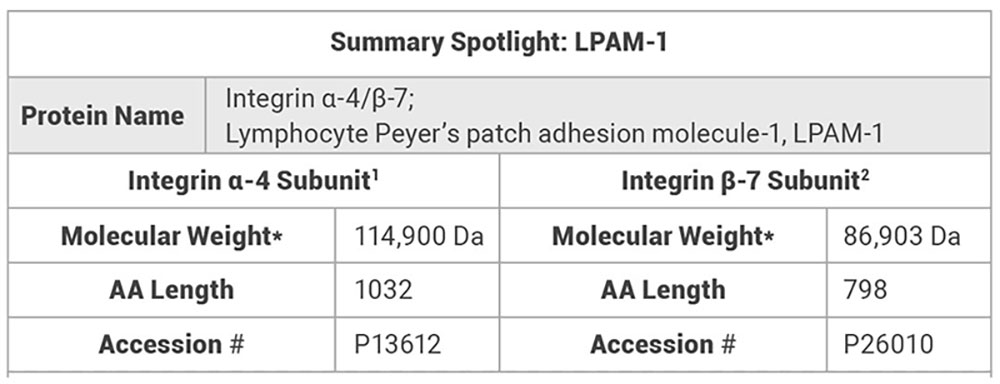
Unsurprisingly, the interaction of LPAM-1 with MAdCAM-1 is heavily localized in the gastrointestinal area, mediating the transfer of immune cells in the gut.As such, most LPAM-1 targeted therapies are focused on relieving inflammation of gastrointestinal tissue stemming from disorders such as colitis, Crohn’s disease, or ulcerative colitis. Other diseases, such as HIV and graft-vs-host disease have also been implicated in gastrointestinal disfunction or also the use of related gut-associated lymphoid tissue as key sites for infection or activation, respectively.
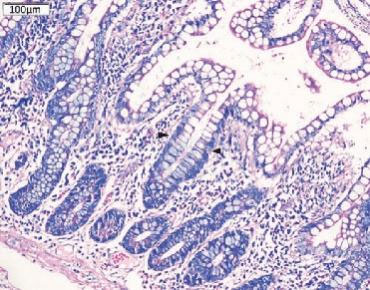
Studies have shown that under the steady state the interaction of LPAM-1 and MAdCAM-1 enables T and B cells to enter the intestine. In inflammatory bowel diseases (IBD), T cells enter the intestine and contribute to chronic colonic inflammation. The inflamed mucosa from Crohn’s disease or ulcerative colitis also have an increased expression level of MAdCAM-1 to draw more immune cells towards the inflamed site.To combat this, antagonists to LPAM-1 have been developed to inhibit lymphocyte penetration into gut-associated lymphoid tissues.3
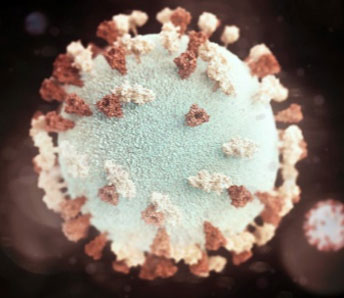
Recent research has identified that the HIV-1 glycoprotein can bind to LPAM-1. Due to interaction of MAdCAM-1 and LPAM-1, infected CD4+ cells with the HIV-1 virion are directed to the gut mucosa, leading to seeding and replication in the intestines during early infection. As such, targeting LPAM-1 for HIV prophylaxis has immense potential in developing a therapy against HIV. However,clinical results have been conflicting, with no clear correlation between HIV-1 infection and LPAM-1. 4
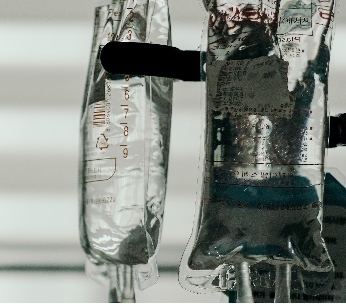
A major obstacle of tumor immunotherapy through bone marrow transplantation is graft-vs-host disease (GVHD). Normally, donor T cells upregulate expression of LPAM-1 as they infiltrate intestinal mucosa and differentiate into effector cells. Disruption of either LPAM-1 or MAdCAM-1 can reduce the amount of intestine-infiltrating donor T cells and helps alleviate intestinal injuries stemming from GVHD.5
Currently, there are three approved therapies targeting LPAM-1 listed in Table 1. All of them are indicated for multiple uses focused on mitigating gut inflammations: This includes inflammatory bowel diseases, GVHD, and other types of cancers. HIV infections has also been indicated for Vedolizumab; however, understanding the pathogenesis of HIV is still lacking, thus providing mixed clinical evidence against HIV infections. With the acceptance of several integrin inhibitors for LPAM-1, integrins have been investigated thoroughly, with over 130 clinical trials being initiated since 2015. Out of the 24 known integrin heterodimers, only 6 have been accepted: 3 of them antibodies and the others as small molecules. The two approved LPAM-1 inhibitors, vedolizumab and natalizumab, has contributed to $4 billion USD per year, setting the stage for future integrin inhibitors.3
Table 1. Integrin α4/β7 marketed drug information

Table 2. Drugs targeting Integrin α4 / β 7 in ongoing clinical trials

What does this mean for LPAM-1 targeting therapeutics and integrin inhibitors in general? Overall, there are several directions that have been taken regarding integrins. The first is based on drug delivery: focusing on orally delivered therapies. This can help significantly expand the availability of integrin inhibitors. The second direction is focused on the inhibition of different integrins; most notably, αv-containing integrins to combat fibrotic diseases. These diseases, such as idiopathic pulmonary fibrosis and nonalcoholic steatohepatitis have a significant and unmet medical need, making it an inspiring target. Similarly, since integrins play a pivotal role in cell signaling and transport, this family of molecule has the potential to treat a range of diseases, especially cancer.
To accelerate the research and development of integrin-targeting drugs, ACROBiosystems has a catalog of all 24 known integrin heterodimers, including integrin α4/β7, expressed through our HEK293 platform and verified by SEC-MALS.
1. ITGA4 - Integrin alpha-4 - Homo sapiens (Human) | UniProtKB | UniProt. https://www.uniprot.org/uniprotkb/P13612/entry.
2. ITGB7 - Integrin beta-7 - Homo sapiens (Human) | UniProtKB | UniProt. https://www.uniprot.org/uniprotkb/P26010/entry.
3. Slack, R. J., Macdonald, S. J. F., Roper, J. A., Jenkins, R. G. & Hatley, R. J. D. Emerging therapeutic opportunities for integrin inhibitors. Nat. Rev. Drug Discov. 21, 60–78 (2022).
4. Ueha, S. et al. Intervention of MAdCAM-1 or fractalkine alleviates graft-versus-host reaction associated intestinal injury while preserving graft-versus-tumor effects. J. Leukoc. Biol. 81, 176–185 (2007).
5. Liu, Q. & Lusso, P. Integrin α4β7 in HIV-1 infection: A critical review. J. Leukoc. Biol. 108, 627–632 (2020).
This web search service is supported by Google Inc.








